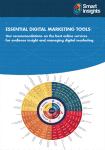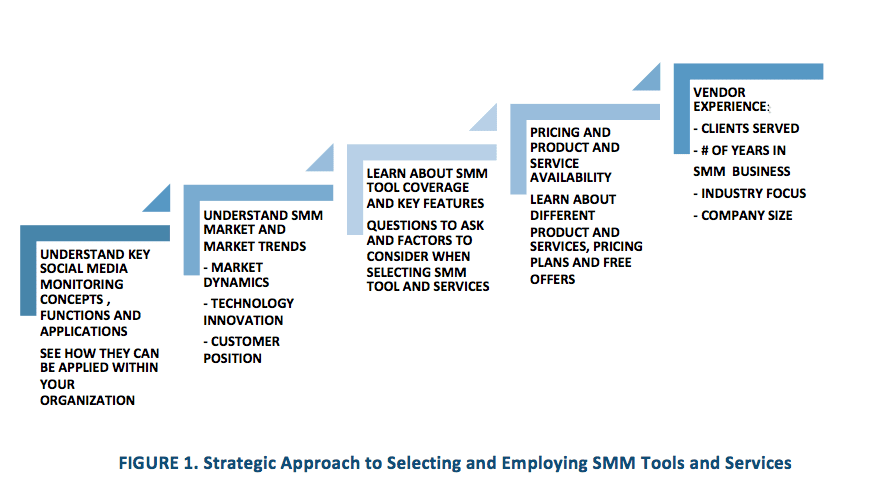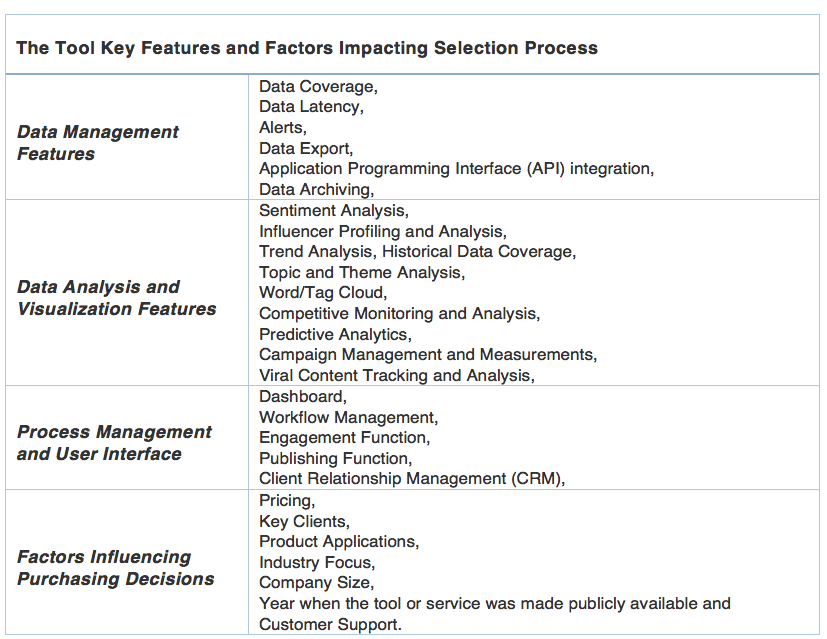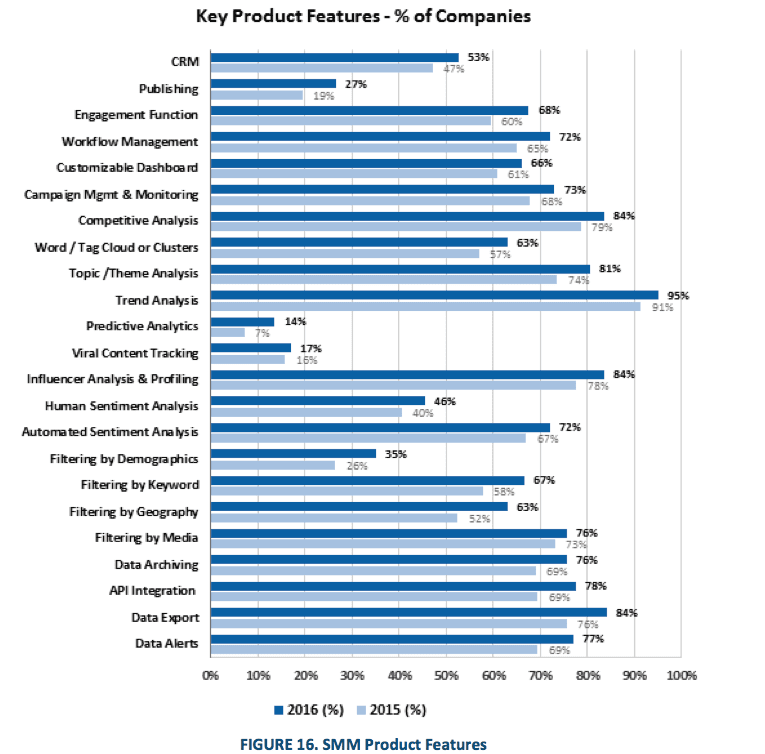Updated report shows the why, what and how of selecting social listening tools
‘Listen first!’ is the first step in almost all advice on creating a social media strategy. To listen effectively you need to choose the right tool. There’s certainly no shortage of choice. Back in 2009 (and updated since) Smart Insights created a comparison of 36 of the best-known online reputation monitoring tools including free and paid tools. Since then, there has been an explosion of new tools on the market, making the selection process now even more bewildering. Our free tools guides has a select number of services.
In order to enable companies and individuals to make effective decisions about the selection and use of SMM tools and services, the November 2016 comprehensive comparison of social media monitoring tools by Ideya Ltd provides overview and comparison of 200 tools to help you make the right choice. It is the most comprehensive report currently on the market. Of the services reviewed, 160 are paid, with the remainder free or using a combined model.
The 62 pages long report extract below, also published on SlideShare has a good level of detail on how to approach selecting tools, a listing of all tools and detailed sample profiles of 5 tools (out of 200 profiles available in the full report). Those that are included in the Excerpts are: (1) BoomSonar, BoomSonar SA, (2) Buzzcapture, Buzzcaputre BV, (3) Coosto, Coosto, (4) Snaptrends, Snap Trends, Inc., and (5) YouScan, YouScan Ukraine Ltd.,
What are social media listening tools?
Social media listening or social media monitoring (SMM) tools can be defined as comprising listening, monitoring, analytics and often intelligence and engagement capabilities. Simple social listening platforms provide a basic capability of capturing online conversations based on the specific search query, offering key insights through the analysis of those conversations.
How do social listening tools help in marketing campaigns?
SMM tool metrics and measurements are designed to evaluate company activities and inform an overall social media strategy. Companies should develop marketing campaigns based on the insight gained through social media monitoring, focus on the highest potential markets or groups identified through market segmentation and influencer analysis and identify optimal time for engagement.
The metrics may involve statistics about the share, reach, sentiment, impact and speed of conversations about the company. These parameters can be used to assess the company image and perceptions before and after campaign and measure campaign effectiveness and identify trends that lead to new marketing and product tactics. Many tools also offer day parting metrics showing the effectiveness of an outbound message at different times of the day to identify optimum posting time and frequency.
To measure the value of your social media activities, you should also look at the overall results your company is generating and carefully examine how social media was engaged in increasing your bottom line through growing revenue and increasing efficiency looking at the incremental revenue after a particular promotion, number of conversions, lead generation effectiveness, number of leads per dollar spent vs. traditional advertising campaigns, and others.
In the area of Marketing and Communications, Ideya says that social media monitoring tools typically assist organizations in:
- Acquiring real time social marketing insights to inform social media marketing and communication plans.
- Optimizing design of marketing and advertising campaigns based on customer insights.
- Developing social content strategies to promote products and services and engage with current and potential customers across social media channels in real time.
- Monitoring and applying'word of mouth' consumer recommendations as a form of direct advertising by identifying and engaging with key influencers, generating buzz, and establishing and building relationships with key influencers.
- Making better decisions about campaigns and brand extensions with a clear understanding of the key factors influencing brand's health.
- Supporting rapid social marketing engagement, and
- Developing performance metrics.
I’d add that they’re also useful in getting insight about customer perception of product categories and how your products or services are considered relative to competitors. This can help inform new product development.
Depending on the maturity and complexity of the SMM tools and its key features, the tool can also support social media marketing professionals in social media publishing, SMM, analysis, and engagement, conversation management, and SEO
Requirements for social listening tools
So that’s the 'why' of social media listening tools, but how do you decide? Issues to consider when selecting social media tools are summarized in the following table:
The following graph illustrates how tools differ in terms of product features, but also shows that the SMM technologies are continually introducing new product features.
SMM Product Features - Percentage of SMM Products (200) Offering Specific Feature:
The number of SMM Tools offering Campaign Management and Monitoring feature has increased significantly in the past several years. According to Ideya’s 2016 Report, the number of featured tools offering Campaign Management and Monitoring feature has grown from 68% in 2015 to 73% in 2016, while the number of the tools offering engagement and workflow management capabilities grew by 8% and 7% respectively. Similarly, about 78% SMM tools offer API integration - a very valuable option for organizations with complex social media programs, which is eight percent (8%) more than in 2015. The above graph also demonstrates increased focus on segmentation by location.
For more information on the Report, check out the Report Excerpts below:
source http://www.smartinsights.com/social-media-marketing/social-media-analytics/social-media-listening-tool-comparison/




No comments:
Post a Comment